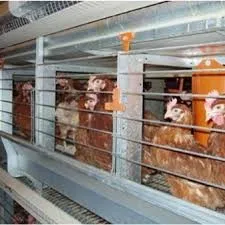chicken scalders
11 月 . 11, 2024 07:52 Back to list
chicken scalders
The Importance of Chicken Scalders in Poultry Processing
The poultry industry is a critical component of global food production, with billions of chickens raised and processed every year to meet the demands of consumers worldwide. Among the various stages of poultry processing, scalding stands out as a crucial process that significantly impacts the efficiency and quality of chicken production. Chicken scalders are used primarily to loosen feathers from the bird’s skin, facilitating easier plucking while also ensuring that the meat retains its quality. In this article, we will explore the importance of chicken scalders, the different types available, and their role in improving the overall processing efficiency.
What is Chicken Scalding?
Scalding is the process of immersing freshly slaughtered chickens in hot water, typically heated to temperatures between 50°C to 60°C (120°F to 140°F). This critical step is necessary for loosening the feathers, making it easier to remove them during the plucking phase. However, scalding serves a dual purpose. It also helps to kill bacteria on the surface of the bird's skin, thereby enhancing food safety and extending the meat's shelf life.
Types of Chicken Scalders
Chicken scalders can be classified into two main categories traditional and modern automated systems.
1. Traditional Scalders These are usually large tanks filled with hot water where chickens are manually immersed. While traditional methods can be effective, they often require more labor and may result in inconsistent temperatures during the scalding process. Additionally, the risk of contamination can be higher if the water is not maintained properly.
2. Automated Scalders With advances in technology, many poultry processing plants have adopted automated scalding systems. These systems allow for precise temperature control and ensure that each bird is thoroughly and evenly scalded. Automated scalders often feature continuous conveyor systems that move birds through the scalding process, making it more efficient, reducing labor costs, and minimizing the room for human error. The precision of automated systems also reduces the risk of meat damage, ensuring better product quality.
chicken scalders

The Role of Temperature and Timing
The effectiveness of scalding is heavily dependent on the temperature of the water and the duration for which the birds are immersed. Too low a temperature may result in feathers that do not loosen adequately, while excessively high temperatures can cause skin damage, impacting the appearance and market value of the meat. Typically, scalding time ranges from 30 seconds to several minutes, depending on the bird's age and feather condition. Achieving the right balance of temperature and time is essential for optimal scalding results.
Impact on Processing Efficiency
The efficiency of chicken scalders not only affects feather removal but also influences the entire poultry processing operation. Quick and effective scalding allows for a smoother transition to the plucking phase, thereby reducing bottlenecks in the processing line. The faster that birds can be processed from slaughter to packaging, the fresher the meat will remain, leading to higher customer satisfaction and fewer losses for processors.
Food Safety Considerations
In an era where food safety is paramount, the role of scalders extends beyond just feather removal. By effectively killing bacteria and pathogens during the scalding process, manufacturers can contribute to safer food products. This process is particularly important in preventing foodborne illnesses that can arise from improperly processed poultry. Regulatory standards often mandate certain requirements for scalding temperatures, ensuring that scalders play a vital role in compliance with health guidelines.
Conclusion
In summary, chicken scalders play an integral role in poultry processing. Whether through traditional methods or advanced automated systems, effective scalding enhances the quality of meat, ensures food safety, and improves processing efficiency. As the demand for poultry continues to rise, investing in state-of-the-art scalding technologies will be essential for processors looking to enhance their operations and provide high-quality products to consumers. By prioritizing scalding practices, the poultry industry can maintain its commitment to quality and safety, ultimately benefiting both producers and consumers alike.
-
school
NewsJul.10,2025
-
Vacuum Packing Machine - Efficient & Reliable Vacuum Packaging Solutions for Food & Industrial Use
NewsJun.10,2025
-
High-Quality European Rabbit Cage Durable Welded Rabbit Cage Wire Mesh Supplier
NewsJun.10,2025
-
High-Efficiency Air Inlet Window for Optimal Poultry Ventilation & Cooling
NewsMay.30,2025
-
High-Efficiency Evaporative Cooling Pads Durable & Energy-Saving
NewsMay.30,2025
-
Automatic Egg Collecting Machine High-Efficiency Poultry Farm Solutions
NewsMay.29,2025






